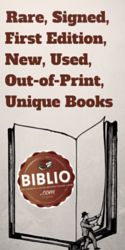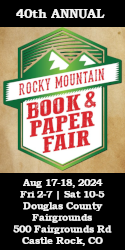Another Publication Goes Digital & Narcissism’s Darker Side
In early January the last print issue of Newsweek magazine (dated December 31, 2012) arrived in the mail. Its demise had been long expected, but nonetheless it felt rather sudden. Tina Brown (Editor in Chief of Newsweek & The Daily Beast) leads off with a perky column entitled “A New Chapter” in which she summarizes notable highlights from the magazine's history and ticks off some of the events that lead to its merging with The Daily Beast – part of Barry Diller's internet and media conglomerate.
A few years ago the Washington Post Company, after paying $15 million for Newsweek in 1961, was looking for a way to divest itself of the magazine which, though maintaining high journalistic standards, had become an economic albatross. Even though subscriber and advertising support had continued to drop precipitously, Sidney Harman, long past the age of retirement, made a purchase offer of a dollar (that was accepted) and set about trying to revive it. Unfortunately Harman died not long afterward and the magazine struggled on until the decision was made last year to go completely digital.
The issue itself is a trip down memory lane and probably a collector's item. The featured articles are mainly retrospective – stories about some of the major news stories that had appeared over the years. In The Battle of Brand X, Evan Thomas (Newsweek) and Jim Kelly (former Time managing editor) reminisce about their intense competition for scoops on the big stories of the day. The First Rough Draft of History is an oral history or compilation of personal anecdotes illustrating the old style of group journalism that emphasized the anonymous team approach to covering major events (as opposed to the currently more trendy individual byline). Many of the famous cover stories from the past are revisited in considerable detail and an illustrated time-line, beginning with the founding of the magazine by Thomas Martyn in 1933 and extending to 2013, when it went completely digital, runs across the bottom of five pages.
Tina Brown's chirpy introduction to the final print issue concludes with:
This is not a conventional magazine, or a hidebound place. It is in that spirit that we're making our latest, momentous change, embracing a digital medium that all our competitors will need to embrace with the same fervor. We are ahead of the curve...
Really? Maybe, but I can only speak for myself. Since my job requires being nearly tethered to a computer monitor for hours every work day, the last thing I want is more of the same when I settle down during the evening with my comfortable stack of books, magazines, and newspapers. Reading words, after hours, on a back-lit screen of any size or shape doesn't hold much appeal. Having said that I do recognize that electronic reading devices do have their advantages – some of the older members of our Shakespeare club, especially those in the cataract surgery age bracket, are absolutely enamored with the font-enlarging capabilities of their Nooks and Kindles. When I get to that point, I'll probably opt for stronger reading glasses from the dollar store. For most serious readers, I'm beginning to think Kindles and the like represent the wave of the past – so even though I'll miss Newsweek, I won't miss it enough to make me want to subscribe to the digital version.
Syracuse's Post Standard is also changing to a digitally-based publication, complete with all necessary Silicon Valley trappings and symbols (“...employees will carry their work tools – state-of-the-art smart phones and laptop computers – in company-issued backpacks...”), but they have not totally given up on print. Home delivery of the newspaper will be limited to three days a week and a smaller edition for newsstand sales will be available within Onondaga County. Also, “unlike copy editors of old, who worked alongside reporters and editors in a newsroom, these employees (called curators)... will select material published on syracuse.com to put together a newspaper”. If the newly organized publication can figure a way to make pop-ups and moving banner ads less annoying, I think there's a good chance that their digital version might regain some of the readership that's been fading away over the years. However, suddenly changing the long-established routine of running or reading a newspaper can be a very tricky business. For example, flipping through the pages of a printed newspaper is a relatively fast and efficient way to get the news you're interested in but since headlines on a news site can't all fit on the home page, most stories are “embedded” meaning the reader has to choose from an array of categories and use a series of links to get to where he thinks he wants to go. Because of the maze-like nature of electronic layout, finding news of interest can be time-consuming, but as in similar situations, it's part of a necessary trade-off to ensure survival.
In the rush to digital publishing great care needs to be taken. In the unrelated retail sector, J.C. Penney spent a lot of money revolutionizing their marketing plan and re-branding themselves to self-congratulatory fanfare over a year ago, but from what I read in the financial press things have not altogether gone as planned.
*
The late violence in Connecticut and elsewhere has profound implications that go beyond debate over the constitutional guarantees embodied in the Second Amendment (tied to the immediate cause of the tragic events). The most recent occurrences have also prompted more people to begin to question the constitutional guarantees covered by the First Amendment – “Congress shall make no law … abridging the freedom of speech, or of the press...” (arguably connected to the fundamental or root cause of mass shootings in general).
If sales figures for the video game and movie business are any indication, the market for violent entertainment remains strong and is fueling a growing industry. Personally I think it goes way beyond that. Some of the most popular shows on television (since I don't watch them, this is only hearsay) are situation-based “reality” entertainment and talent shows on the order of American Idol and the like. And then, of course, there's the network news and all sorts of celebrity/tabloid television programs.
In many American communities, where stabbings and shootings happen almost every day, the local news makes a brief mention and then moves on. No fifteen minutes of fame included. For mentally-deranged people nurtured in a culture of narcissism (American Idol) and violent entertainment (Quentin Tarantino), it has to be big – really big. Big enough to monopolize network news and tabloid television for days, if not weeks, and big enough to get the criminal's picture on the front cover of the National Enquirer. In short, media-assisted narcissistic gratification for the otherwise unaccomplished misfit. Instant fame that doesn't depend on talent and years of dedication and hard work.
All of this has implications for and should be worrisome to people who are strongly biased in favor of a strict interpretation of the First Amendment. I am of the opinion that in the years to come, both the First and Second Amendments will remain the subject of intense debate. When freedom of speech and freedom of the press come under increasing attack, as is already happening, will government move for tighter control of the press and other forms of media? Will we see bumper stickers insisting “when printing presses are outlawed only outlaws will have printing presses”? Should criminal narcissists with murderous intent be rewarded with magazine cover stories, potted biographies and other forms of spectacular press coverage? Personally I don't think so, but then I don't have all the answers and don't think anyone else does either.
*
Larry McMurtry's Letter from Archer City is on hiatus and will be discontinued indefinitely or until further notice. As an important novelist, screen-writer and major force in the antiquarian bookselling world, his talent, knowledge and years of experience have taken him to almost every corner of the book world. His long-time readers and colleagues in the book trade join me in looking forward to more of his news and reflections from the north Texas plains. At last report Booked Up is leaner and lighter by nearly three hundred thousand volumes, and poised for what I believe is the inevitable renaissance of interest in printed books.
Garden Notes:
At last count there were at least four dozen lemons remaining and still ripening on the two dwarf trees spending the winter months in our unheated “orangery”. Unlike spray-painted citrus sold in supermarkets to color-conscious consumers, ours are still partially green even though ripe and ready for use. The advantage is that the skins are unsprayed and safe to use for lemon zest.
The clusters of “mystery bulbs” I planted in pots last fall turned out to be hyacinths that I had thinned out during the early summer, set aside and almost forgotten about. At the moment (end of January) they are in bloom and filling part of the house with the fragrance of spring. I think I'll do the same with tulips next year – outdoors most of them are eaten by deer of which, come to think if it, there are fewer than in years past. Maybe we should be grateful to the growing coyote population for helping to restore nature's balance.
Acorn squash and leeks are still holding out and I've resolved to plant even more this spring – easy to grow and store with large yields from a relatively small amount of space. Will hold off on starting bedding plants (flowering annuals) until about mid-March. Last year was wonderful for lima beans, tomatoes and eggplants (aubergine) – hope we can pull it off again this year. One of the advantages of working from a home office overlooking the gardens is the flexibility it offers – taking advantage of good weather is a lot easier with a portable phone.

























